The Orbital ATK Stargazer L-1011 aircraft carrying the Pegasus XL rocket and NASA’s CYGNSS spacecraft has been cleared for takeoff at 7:37 a.m. EST. Launch time is targeted for 8:40 a.m. Stand by for takeoff.
Author: Anna Heiney
Stargazer Taxis to Runway
Meet the L-1011 Flight Crew
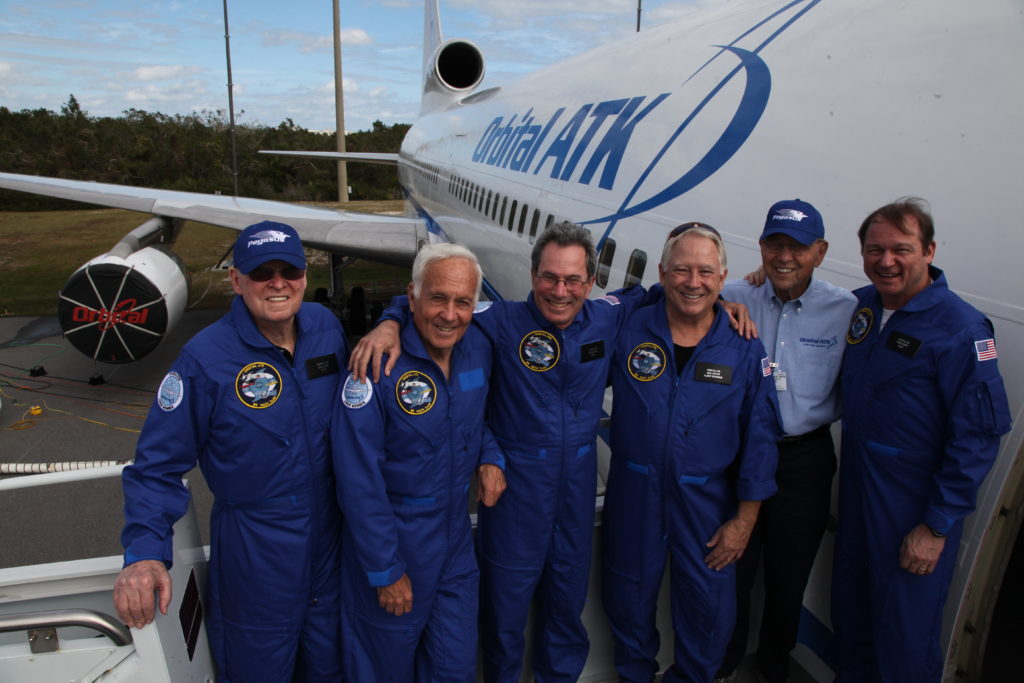
Here are the pilots and flight engineers charged with delivering the Orbital ATK Pegasus XL rocket to its drop point 39,000 feet above the Atlantic Ocean. From left to right are pilots Ebb Harris and Bob Gordon, chief pilot Don Walter, flight engineer Bob Taylor, ret. Chief pilot Bill Weaver, and flight engineer Mark Kenny.
New Launch Time: 8:40 a.m. EST
Launch managers now are targeting the drop and launch of the Orbital ATK Pegasus XL rocket with NASA’s CYGNSS spacecraft for 8:40 a.m. EST. The L-1011’s anticipated departure time is now 7:37 a.m., allowing time for the pilot to navigate around some precipitation on the way to the drop point. This adjusted timeline keeps NASA within today’s launch window. Other than the fog — which continues to burn off now that the sun has risen — no other issues are under discussion. The drop time could still be adjusted depending on flight conditions. Today’s launch window extends to 9:19 a.m.
Fog Situation Beginning to Improve
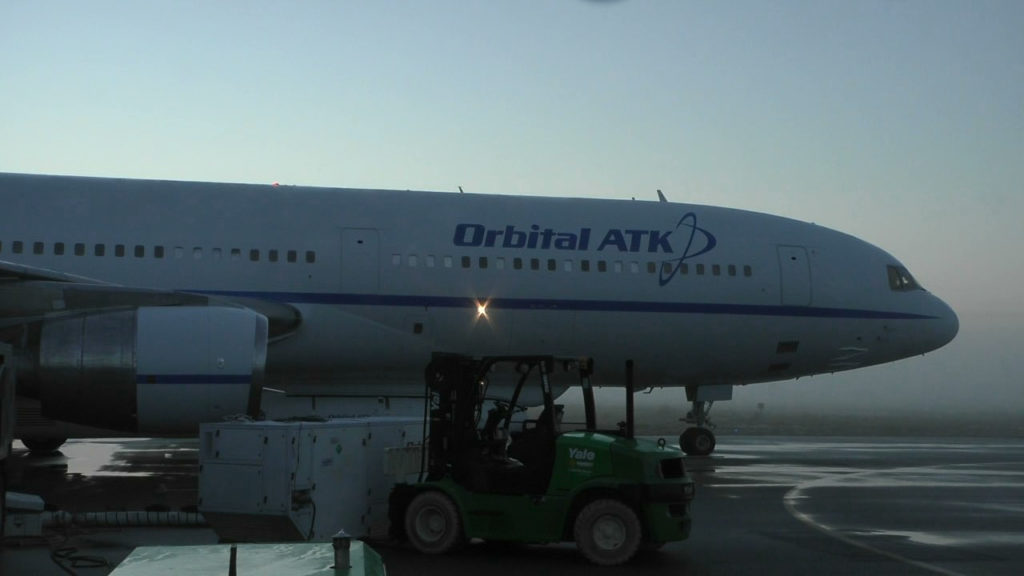
Now that the sun has risen, the fog already has lifted to a half-mile of visibility at the Skid Strip runway at Cape Canaveral Air Force Station and in other areas has improved a bit beyond that, according to NASA Launch Commentator George Diller. The L-1011’s engines are being powered on and we’re standing by for an adjusted takeoff time.
Ground Fog May Delay Takeoff
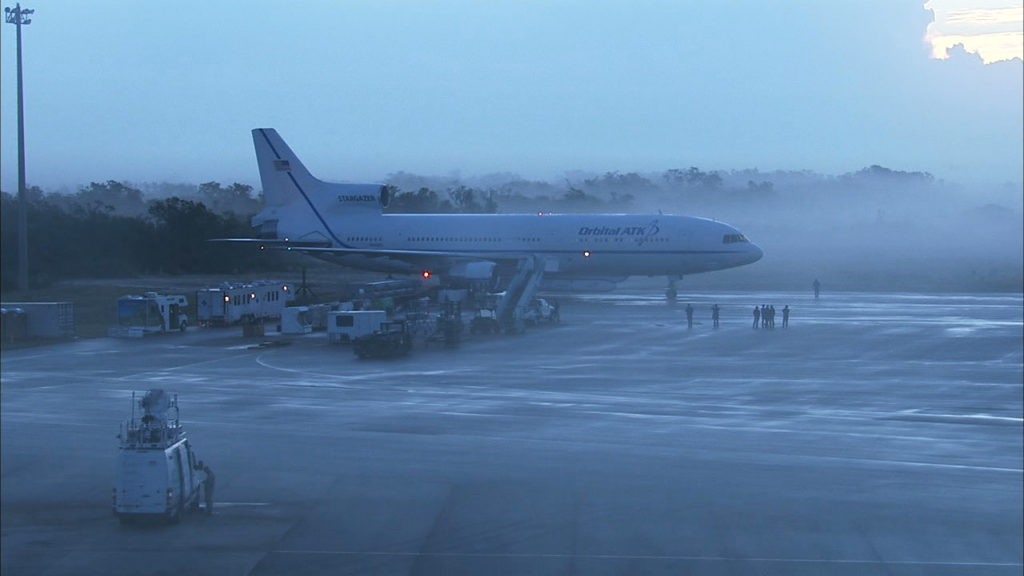
At the Skid Strip runway at Cape Canaveral Air Force Station in Florida, the Stargazer aircraft and a NASA F-18 chase plane provided by the agency’s Armstrong Flight Research Center in California are preparing for takeoff. Due to heavy fog in the area, discussions are on the way among launch managers and Launch Weather Officer Mike Rehbein with the U.S. Air Force 45th Weather Squadron regarding the timing of takeoff. If the Stargazer L-1011 should have to return to Cape Canaveral with the Pegasus XL rocket still attached, at least one mile of visibility would be required. Visibility currently is about a quarter of a mile. There are no technical issues reported with the CYGNSS spacecraft, the Pegasus XL rocket or the L-1011 aircraft.
Launch Now Set for 8:30 a.m. EST; Weather Forecast Remains 60 Percent ‘Go’
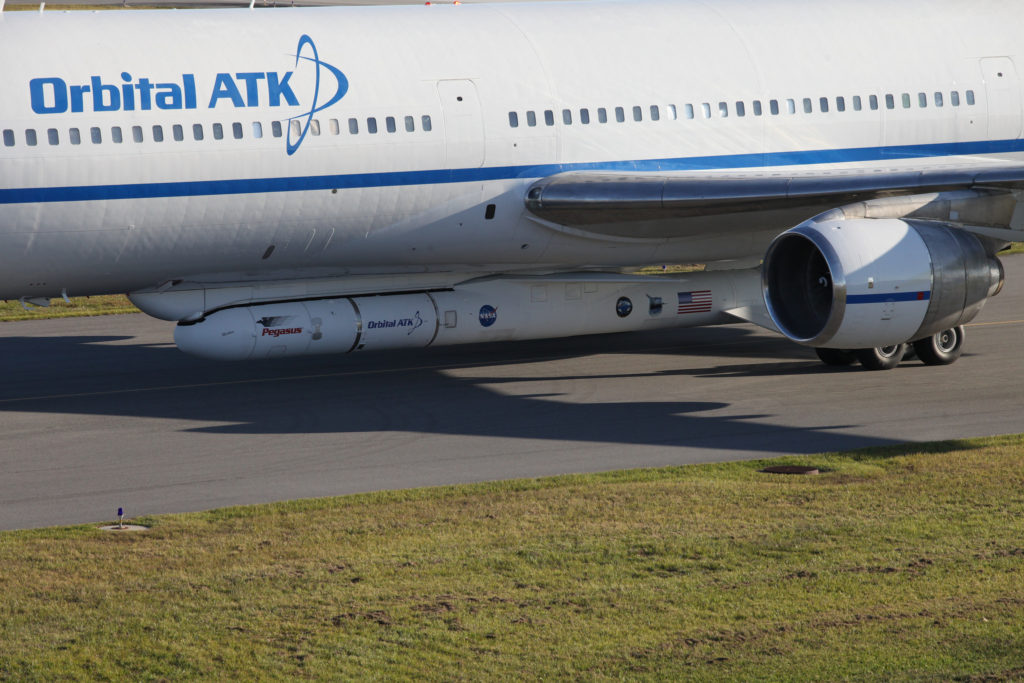
Good morning from Cape Canaveral Air Force Station in Florida, where NASA’s Cyclone Global Navigation Satellite System, or CYGNSS, spacecraft is scheduled to launch this morning. The launch time has been adjusted to 8:30 a.m. EST, although the one-hour launch window remains the same and opens at 8:19 a.m. Times throughout the blog will be given in Eastern.
CYGNSS will take off aboard an Orbital ATK air-launched Pegasus XL launch vehicle, which will be carried to an altitude of about 39,000 feet and released over the Atlantic Ocean from the company’s L-1011 aircraft, “Stargazer.”
The launch day forecast from the U.S. Air Force 45th Weather Squadron calls for a 60 percent chance of favorable weather. The only weather condition not within limits is precipitation in the flight path, but that is expected to clear before launch time.
CYGNSS will make frequent and accurate measurements of ocean surface winds throughout the lifecycle of tropical storms and hurricanes. The CYGNSS constellation consists of eight microsatellite observatories that will measure surface winds in and near a hurricane’s inner core, including regions beneath the eyewall and intense inner rainbands that previously could not be measured from space.
CYGNSS Launch Coverage Starts Here at 6:30 a.m. EST
NASA’s CYGNSS mission is set to begin with launch aboard an Orbital ATK Pegasus XL rocket this morning. Updates from the countdown will begin right here at 6:30 a.m. and on NASA Television at 7 a.m.
The Pegasus XL rocket is an air-launched vehicle that begins its flight after it is dropped from Orbital ATK’s modified L-1011 aircraft, “Stargazer,” which will take off from the Skid Strip runway at Cape Canaveral Air Force Station and carry the rocket to its release point above the Atlantic Ocean an altitude of approximately 39,000 feet. So, for those visiting or living in the Central Florida area who are looking for viewing suggestions, this will be a tough launch to see outside, and viewing online and on television is recommended.
CYGNSS Mission ‘Go’ to Continue Processing After Flight Readiness Review
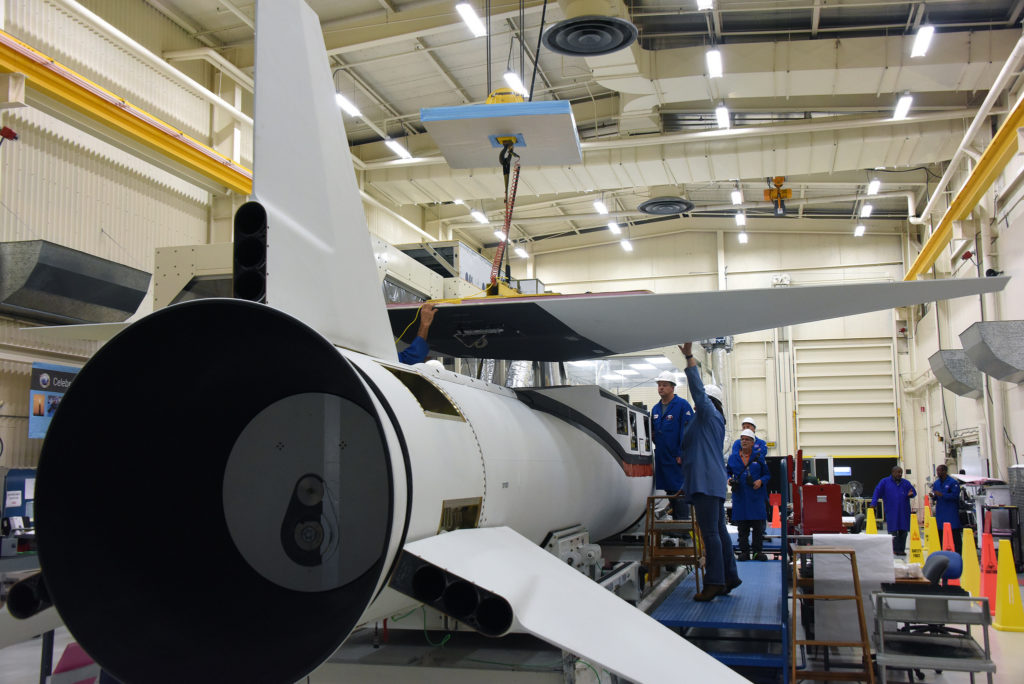 At the conclusion of Flight Readiness Review at Kennedy Space Center in Florida on Monday, senior NASA and contractor managers voted unanimously to proceed with processing toward the targeted launch of the CYGNSS mission on an Orbital ATK Pegasus XL rocket on Monday, Dec. 12.
At the conclusion of Flight Readiness Review at Kennedy Space Center in Florida on Monday, senior NASA and contractor managers voted unanimously to proceed with processing toward the targeted launch of the CYGNSS mission on an Orbital ATK Pegasus XL rocket on Monday, Dec. 12.
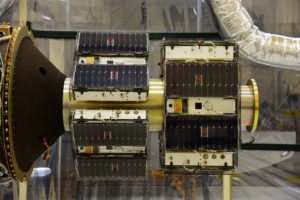 The team is progressing towards mating the Pegasus rocket to Orbital ATK’s L-1011 aircraft, nicknamed “Stargazer,” next week at Vandenberg Air Force Base in California for the ferry flight to Kennedy. A final “go” decision will be made at the CYGNSS Launch Readiness Review on Saturday, Dec. 10.
The team is progressing towards mating the Pegasus rocket to Orbital ATK’s L-1011 aircraft, nicknamed “Stargazer,” next week at Vandenberg Air Force Base in California for the ferry flight to Kennedy. A final “go” decision will be made at the CYGNSS Launch Readiness Review on Saturday, Dec. 10.
On launch day, the Stargazer aircraft will take off from the Skid Strip at Cape Canaveral Air Force Station in Florida, carry the Pegasus XL rocket to a precise drop point for its release and launch. The two-year CYGNSS mission will make frequent and accurate measurements of ocean surface winds throughout the life cycle of tropical storms and hurricanes. The data that CYGNSS provides will enable scientists to probe key air-sea interaction processes that take place near the core of storms, which are rapidly changing and play a critical role in the beginning and intensification of hurricanes.
Photo above: NASA/Alex Valdez
Photo at right: NASA/Randy Beaudoin

